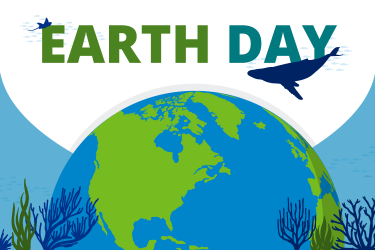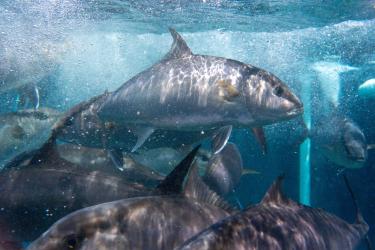Today, NOAA Fisheries released new five-year action plans for the eight marine species identified as among the most at risk of extinction through NOAA’s Species in the Spotlight. The goal of this campaign is to stop the decline of these species and move them toward recovery.
NOAA is also looking to join with local, state and tribal governments, academic partners and the public to make sure these endangered species do not decline further.
The eight species highlighted in the action plans, all listed as endangered under the Endangered Species Act, are the Gulf of Maine population of Atlantic salmon, Central California Coast coho salmon, Cook Inlet beluga whales, Hawaiian monk seals, Pacific leatherback sea turtles, Sacramento River winter-run chinook salmon, Southern Resident killer whales in Puget Sound, and white abalone.
“The action plans will help change the trajectory to recovery for these eight extremely vulnerable species,” said Eileen Sobeck, assistant NOAA administrator for NOAA Fisheries. “To ensure these species have a fighting chance at recovery, we need help from our valued partners and the public. Anyone can visit our Species in the Spotlight Action Plans site to learn about NOAA’s science behind the effort, and how they can contribute toward the milestones that will help these species recover.”
The public can visit NOAA’s Species in the Spotlight site to learn about NOAA’s science behind this effort.
The 5-year action plans are an important step in supporting the agency’s goal to significantly reduce, stabilize, or reverse the rate of decline for the eight target species. Action plans look at previous species recovery plans and highlight the focused, immediate actions our partners and the public do to stabilize these eight species and help prevent their extinction.
Recovery plans, devised for all threatened and endangered species, are more detailed than action plans and include all of the management actions necessary for species recovery, criteria necessary for a species to be considered recovered and removed from the endangered species list, and time and cost estimates for its goals.
One of the goals of the action plans includes expansion of floodplain and estuarine habitat restoration efforts to improve the fitness and survival of Central California Coast coho salmon. Efforts are also aimed at detecting and preventing catastrophic disease outbreaks and disease-related mortality for Hawaiian monk seals, whose lack of genetic diversity leaves them vulnerable in their ability to respond to newly introduced diseases.
“Recovering threatened and endangered species also supports strong coastal communities and benefits our nation’s economy,” said Sobeck. “Recovered species play important roles in a healthy marine food web, contributing to sustainable fisheries and creating vibrant coastal destinations with wildlife tourism opportunities.”
While this campaign brings additional awareness to these eight species, it also underscores NOAA Fisheries’ comprehensive approach to the conservation and recovery of all threatened and endangered marine species. To learn more about NOAA Fisheries’ ongoing protected resources program, visit the Protected Resources homepage.


